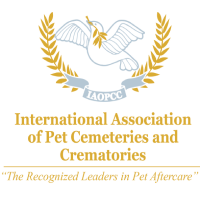What Is Aquamation?

Aquamation is a process by which a combination of 95% water, 5% alkaline materials (salts), and heat flow over a body to break down organic material. This process requires no chemical or acidic additives. The reason aquamation works is due to the gentle flow of water. Molecules in the water combine with the alkaline materials to break down tissue over time, leaving behind calcium phosphate, an inorganic mineral in bones.
At Georgia Pet Aquamation, our caring staff can perform an aquamation for your pet and return their remains to you or your veterinarian within one to two weeks.
How Is Aquamation Different From Cremation?
People often call aquamation “water cremation” because both processes reduce a body to ashes; however, aquamation does this with water instead of fire. Even though cremation is widely available throughout the country and one of the most common methods of disposition, aquamation is a reliable alternative. The technology for aquamation has been around longer than most would think. The aquamation process was patented in 1888 and has even been used for humans since 2005.
Aquamation is a more gentle way to honor a deceased pet. Instead of subjecting a pet’s body to temperatures exceeding 1,300°F, we place their body in a warm bath with a mild current for several hours. We use pressure to prevent the water from boiling.
As a result, you will receive up to 20% to 30% more of your pet’s ashes, which will have a similar texture to white, fine sand. Fire cremation produces fewer remains that have a coarser texture.
What Are the Environmental Benefits of Aquamation?
It requires a lot of energy to produce enough heat to break down a body through fire cremation, even for a small pet. Traditional fire cremation also releases harmful greenhouse gases into the atmosphere, contributing to air pollution.
Aquamation releases no harmful greenhouse gases into the environment. It also uses 90% less energy than fire cremation and burns no fossil fuels, meaning the carbon footprint of aquamation is around 75% less than that of a traditional cremation. The liquid byproduct of aquamation is sterile and can be recycled back into the Earth as a nutrient-rich fertilizer.
What Are Ways To Memorialize a Pet After the Aquamation Process?
At Georgia Pet Aquamation, we understand how important your pet is to your family. Through aquamation, you will receive more of your beloved animal’s remains than you would with cremation. When we receive your pet, we give them a stainless steel identification tag with the most up-to-date tracking software that remains with your pet during the entire process to ensure that we return them to you.
Once you receive your pet’s remains, you have several options to memorialize them. In addition to our memorial packages, we offer many other options in urns, jewelry, memorial items, and keepsakes.






